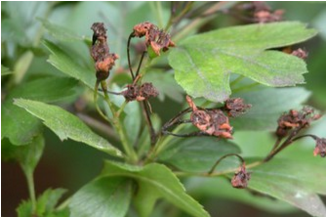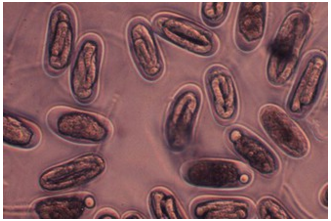SOIL IS THE ROOT OF GOOD TREE HEALTH
Protecting your trees from footprints

Visit your local garden center for beautiful flowers, shrubs, trees and more.
LoveYourPlants.org is brought to you by AmericanHort, in partnership with the National Association of Landscape Professionals.

Homeowners strive to maintain healthy plant life in their gardens and landscapes, but oftentimes shrubs suffer casualties, or fall ill from disease for a variety of reasons. From too little watering to pest infestation, proper disease identification is crucial to the survival of your shrubs. Depending on the specific type of shrub affected, the disease, diagnosis and treatment will all vary.
Similar to humans, when the needs of shrubs are not met, a decline in health will result. A landscape professional, trained and knowledgeable about plant health, can inspect and diagnose sick shrubs but for those determined to do a little self-diagnosing, here are some fundamentals to get you started.
Begin your prognosis by eliminating improper growing conditions or shrub pests as the culprits for your shrub’s demise by looking for gnaw marks or stripped leaves, which will indicate rodents, rabbits, or deer. Once you are certain your shrub isn’t being eaten by bugs or animals, you can move on to analyzing the type of disease. When diagnosing shrub disease, there are two categories for which your “ick” will be classified: abiotic or biotic. Abiotic diseases are man-induced diseases that involve non-living factors such as lack of space for root growth, prolonged levels of water toxins, or extreme heat, light or soil pH levels. There are a host of resources on those topics. Let’s explore the biotic causes of woody-shrub diseases that are scientifically or biologically-induced, such as fungi, bacteria, viruses and nematodes.
Identifying the Disease in Woody-Shrub Fungus Materials
It’s important to note that you should identify your infected shrub first as not all diseases affect one type of plant. This will help narrow down your market of diseases to identify. Be sure to check the trunk, leaves, branches and roots to note the specific symptoms from which your shrub is suffering. There are numerous types of shrub diseases so let’s explore some of the most common biotic diseases and symptoms of what to look for when diagnosing your sick shrubs and how to treat each disease.
 Fungus: Powdery Mildew Fungus
Fungus: Powdery Mildew Fungus
This common type of disease is a fungal growth that leaves a white powder on surfaces of shrub foliage.
Treatment:
 Bacteria: Fire Blight
Bacteria: Fire Blight
This common type of bacteria leaves twigs and branches on shrubs wilted and blackened. Often, the affected branches will bend over into the shape of a shepherd’s crook.
Treatment:
 Nematodes
Nematodes
Symptoms include browning shrubbery and vegetation, which may cause undergrowth to die and/or fall off the plant. Root systems will be affected and plant growth will be stunted.
Treatment:
 Virus: Rose Mosaic Disease
Virus: Rose Mosaic Disease
You will notice signs of this virus if your shrub experiences color changes in its leaves, specifically a mosaic pattern of light or dark greens. Additional symptoms and signs include stunted growth and uncommon color changes.
Treatment:
Prevention
Many people focus on the health of their plants in the summer and then that attention wanes. It’s important to be proactive to prevent shrub disease throughout the year. Be aware of the following factors that are all important to good plant health:
While these are some of the most comment shrub diseases, there’s a laundry list of other culprits that can be detrimental to your plants. A landscape professional can help identify problem posers and identify an appropriate treatment plan – and recommend steps to ward off disease before it strikes.
Photos courtesy of Sun Valley Landscaping, Omaha, NE.
We recently updated our Privacy Policy. By continuing to use this website, you acknowledge that our revised Privacy Policy applies.